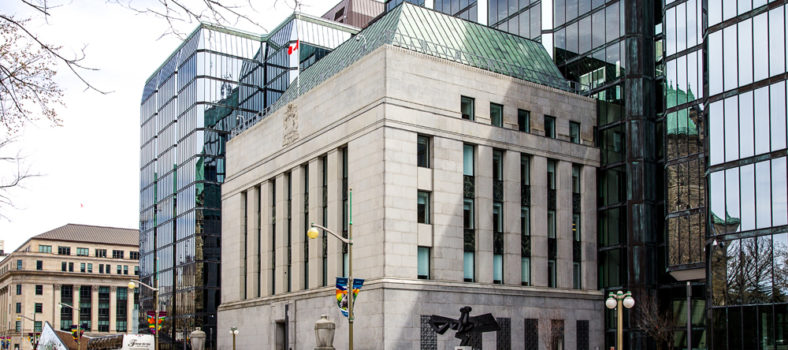 By André Gagné, CEO GFT Canada
By André Gagné, CEO GFT Canada
With investment in Canada’s fintech sector reaching a record high already this year, consumers have more choices than ever before when it comes to deciding where to entrust their money.
And as the government’s 2025 target for launching a regulated open banking framework approaches, changing banks will soon become far less of a headache as Canadians gain control of their personal financial data and have the ability to easily share it with any organization they’d like—rather than it being siloed to their current provider.
All of this is bringing Canada’s Big Six and other traditional banks to a crossroads: Compete or collaborate with the digital challengers that are slowly moving out of the wings and onto center stage?
Earlier this quarter, we surveyed Canadian consumers and found that while 80% are happy with their current financial institution, AI and tech-driven personalized experiences are enticing 25% toward digital challengers.
This is largely due to the fact that convenience has become king in Canada. Thirty percent of Canadians cited the convenience of a mobile banking app as more important than two features that have historically been banks’ bread and butter—competitive interest rates (26%), and access to physical bank branches (21%).
In our Banking Disruption Index, we set out to understand the ways new technology is influencing where consumers bank and how traditional Canadian financial institutions can best cater to users in order to retain their business.
The good news is that this shift in priorities doesn’t have to be the Big Six’s downfall. Canadians still feel loyal towards their banks—they’re just asking for their current providers to offer the same digital experiences as those of fintechs. While competing with their own digital offerings is certainly one way of doing so, it’s not the only option.
Open banking will also make it easier for banks to work with, rather than against, fintechs by democratizing access to the data fintechs need to continue delivering the digital experiences that Canadians want. Then, banks can integrate these new features through partnerships with fintechs instead of having to dedicate their own resources and budgets to building them themselves.
Some of the Big Six banks are already beginning to implement this strategy, integrating fintechs into their ecosystem, and investing heavily in these companies. But there is still more work to be done.
As this happens, here are three main areas for banks to focus their collaborative efforts to give consumers the best of both worlds.
Enhance Mobile Banking Apps
There’s been an increased consumer interest globally in stepping up how mobile banking apps can be used. This goes beyond everyday capabilities like credit card payments and check deposits as more and more consumers are looking to apps for heightened experiences such as automated fraud monitoring, voice-activated banking tools, and preventative overdraft alerts.
This is especially true of Gen Z and Millennial consumers—two demographics that fintechs and digital banks have already started to win over. Forty-six percent of these individuals say that they are now looking to apps, not banks, for financial guidance. Another 25% of Canadians between the age of 18 and 24 also have a budgeting app from a provider other than their bank, as do 21% of those aged 25 through 34.
In order to retain this younger generation of customers, banks need to appeal to their digital-savvy preferences by zeroing in on their mobile apps over brick-and-mortar offerings—, both upgrading their current capabilities and developing new ones through partnerships with fintechs.
Prioritize Personalization
Consumers have come to expect personalized experiences in everything they do, including how they shop, travel, and now, bank. According to our report, almost a quarter of consumers (23%) say that if their bank had “a complete view of me as a client”, they would feel more confident.
This is where traditional banks have an enormous leg up on fintechs, as they have decades of historical financial data that can help inform the types of personalized offerings that consumers want—and even those they haven’t thought of yet. Partnering with one another is one of the most efficient ways for both banks and fintechs to bring these experiences to life.
Provide Money Management Advice
Saving money is top of mind for the vast majority of Canadians (90%). Banks can take this a step further with advice on how to manage those savings through things like investment and budgeting recommendations.
While many banks already offer their customers a complete view of their spending and saving, Canadians think they could be doing more by offering richer insights and more personalized advice. Nearly a quarter (22%) of consumers say they want more support in planning for the future, while 18% want new savings products, and 32% say advice on how to better manage their money is completely missing from their bank.
The more that Canadians feel the Big Six are lacking in these areas, the more they will turn to outside budgeting apps, leaving traditional banks with the choice of whether to compete against them or integrate fintech offerings into their own.
The digital future is here, and there’s room for everyone. Major banks have been relying on reliable but aging core systems, which has been, in a way, hindering the creation of innovative digital experiences for customers. And fintechs have been capitalizing on this absence of digital innovation to gain market share. Rather than focusing on trying to force one another out, collaboration between traditional banks and fintechs will help usher in the next wave of financial experiences that benefit all parties involved.
André Gagné is CEO GFT Canada and one of the Keynote Speakers at the 2024 Finance Analytics Forum in Toronto on December 2nd 2024.




